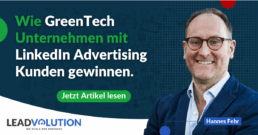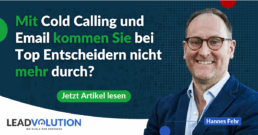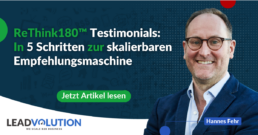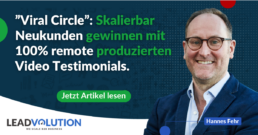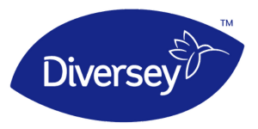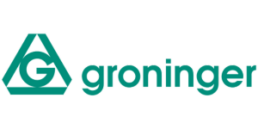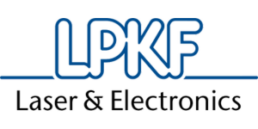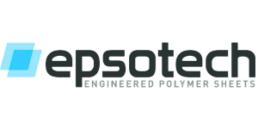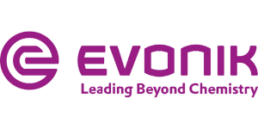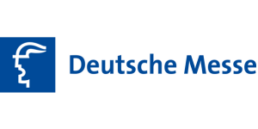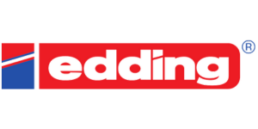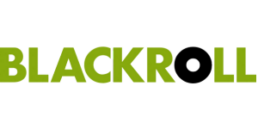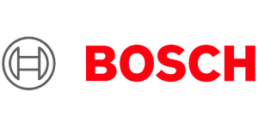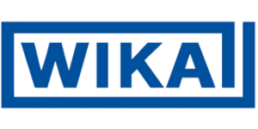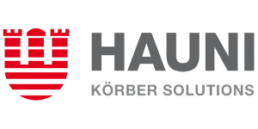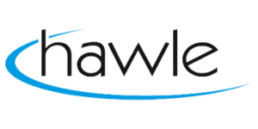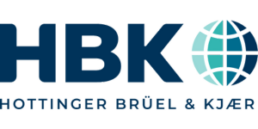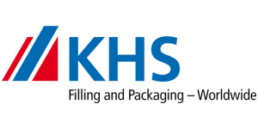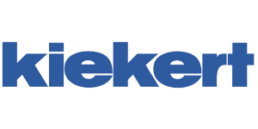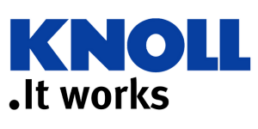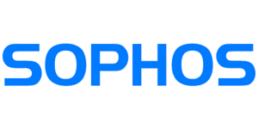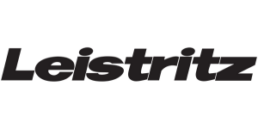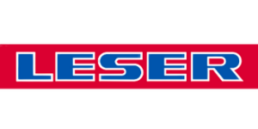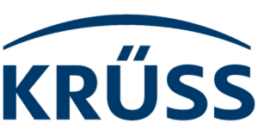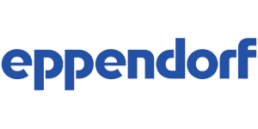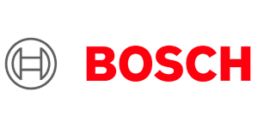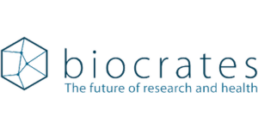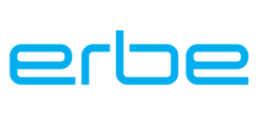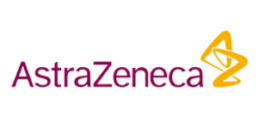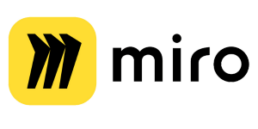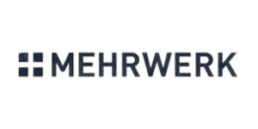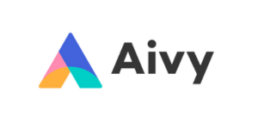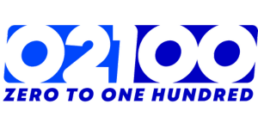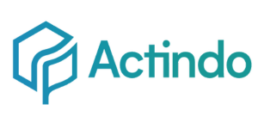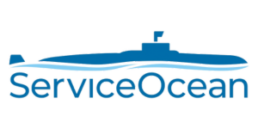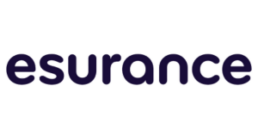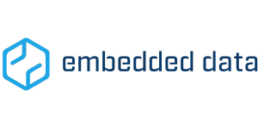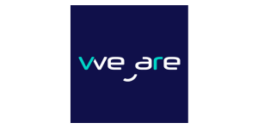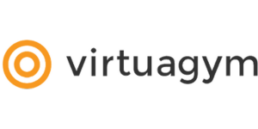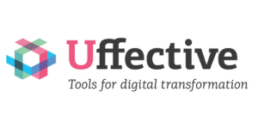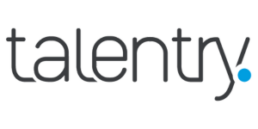With ReThink180™, you can develop content for B2B products that require explanation and convert leads 50-200% better.
SUMMARY:
The ReThink180™ methodology developed by Leadvolution offers you a systematic process from your target group to high-converting B2B content
Many B2B companies invest a lot of effort in developing persona concepts – which then disappear into a drawer. Why? Personas answer the question “Who do I want to reach?” But they don’t answer “How do I write content that will spark this person’s interest?” Read this article to find out how you can use the ReThink180™ methodology to systematically develop the right content ideas from your personas and create targeted content with added value based on them. We also offer you a free consultation with one of our experts. Ready to unlock untapped potential? Then read the article below or contact us directly.
About Leadvolution
About LeadvolutionWith over 160 advertising setups for fast-growing startups, exciting medium-sized companies, and over 35 global market leaders, Leadvolution is one of the most experienced social media B2B marketing consultancies in Europe. Within 4-8 weeks, we build a globally scalable social media lead generation system for very specific and complex B2B target groups, generating up to 500 leads per month.
The problem: Personas are only of limited help when creating content.
Persona concepts answer the question of which individuals B2B companies want to reach. This is extremely valuable, which is why almost all B2B companies have defined their personas – but marketers are then faced with the challenge of producing content for these personas that delivers measurable results. Unfortunately, personas do not provide any answers as to what exactly this content should contain. As a result, persona concepts, which are often developed at great expense, are hardly ever used.
B2B marketers often talk about who their company is, what products they have, and what these products can do. However, this does not usually lead to good results for push media such as social media, because users have to explain for themselves which of their problems are really being solved and then often still wonder what quantifiable results they can expect. As a rule, they cannot intuitively decide for themselves whether the content being played is actually relevant to them and whether they should pay more attention to it.
What’s missing? Personas usually analyze the problems faced by decision-makers and the individual consequences of these problems only very superficially – and even if they do, there is no systematic methodology for developing detailed lines of argumentation for the messaging. Without this, it is tedious and difficult for the content team of any B2B company to develop concrete ideas and concepts for content that works.
In this article, we show you how you can close this gap. Don’t have time to learn more right now? No problem: Arrange a free expert consultation with us here to evaluate the conversion potential of your content.
The solution: The ReThink180™ methodology creates lines of argument that explain in 15 to 30 seconds why the product in question is interesting.
To generate interest on social media, you need to start from the customer’s perspective and explain which of their problems will be solved and with what results, or what opportunities the product in question offers. The aim is not to explain the product in detail – it is enough for the ads to generate interest, i.e. for the customer to understand why it is worth requesting more information. Further details can be provided later in the sales conversation. This has a nice side effect: creating content for products that require explanation becomes much easier, because marketing does not need to explain exactly how they work, only why the customer should be interested in them.
We use a tried-and-tested method to analyze your customers' perspective and use this to create highly successful content in a systematic process.
To develop lines of argumentation for messaging as a basis for your content, we proceed in four simple steps:
- In interviews with the sales team, we identify all relevant pain points of your target group that you can solve with your product.
- We then evaluate the causes and consequences of the pain points in greater depth, specifically for the job profiles you would like to reach within your specific target group.
- We then quantify the results that your target group can achieve with your product and
- collect purchase concerns and the corresponding arguments to overcome them in your communication.
- Finally, we develop a wide range of trust arguments for your company.
This approach allows you to develop a variety of lines of argumentation for each product (e.g., about cost, quality, efficiency, speed, etc.) that, unlike a general “awareness” text, are highly relevant to your target group, generate direct product interest, and, as a side effect, deliver genuine and sustainable brand building. The reason: customers can now associate the added value of the product with your company name.
The best thing about it: you can use this messaging not only as a storyline for social media ads, but also for any kind of content, such as expert articles, testimonials, videos, trade fair content, or lead ads.
Need a new idea? Then select any pain point, provide an example, and use it to derive the storyline for your next piece of content.
You can test this approach with us in pilot projects within four to six weeks and generate meaningful success data in this short period of time, which will be invaluable in internal discussions.

Illustration: The ReThink180™ Content Process
ReThink180™ messaging not only generates 50-200% better ad performance, but also higher lead quality.
Communication that is focused on generating rapid product interest has been proven to achieve click and conversion rates that are 50 to 200 percent higher than previous campaigns. And this is not achieved through intrusive, empty advertising messages or clickbaiting, but through valuable information that is relevant to the customer, offers real added value, and thus generates lasting interest.
Getting the message of an ad across clearly has another advantage: it improves lead quality. A customer who already understands the added value they can achieve with a product is significantly more valuable to sales than someone who was only interested in a general informative white paper – because they lead to higher appointment rates. The customer is happy to receive a call from sales, rather than reacting with annoyance because they have been called by someone when they only wanted the white paper.
Last but not least, the insights gained from social media campaigns can be used to add value to website communication. B2B websites usually have the problem that their reach is far too small for statistically meaningful A/B testing. This often leads to exhausting discussions based on personal opinions. Instead, they can now use the high reach on social media in conjunction with ReThink180™ to first test different communication approaches in a data-driven manner and only then actually implement them on other channels (e.g., the website).
Please contact us if you would like to learn more about ReThink180™.
Conclusion: It pays to develop content from the customer's perspective.
The ReThink180™ method breathes life into your personas. Our framework helps you develop highly targeted, concrete content in a short period of time, generate significant interest, and achieve high registration rates. The content generated in this process can help improve contact rates not only on social media, but across all channels.
Simply request a free consultation with an expert:
We work with you to evaluate your company’s individual potential – how you can bring your personas to life, how you can provide them with targeted, value-added content, and how you can establish an efficient content process from idea generation to scheduling an appointment with your new lead.
How green tech can successfully scale with digital marketing structures
SUMMARY:
Many GreenTech companies are under enormous pressure to grow, but struggle with niche, hard-to-reach target groups, small sales teams, and the high complexity of B2B performance marketing. The article shows how our Greentech Booster helps overcome these hurdles: In just a few weeks, you can create a globally scalable lead generation system that reaches top decision-makers, fills your pipeline, and allows your team to focus on closing deals—completely performance-based and without agency costs. Read the article below or contact us directly.
About Leadvolution
About LeadvolutionWith over 160 advertising setups for fast-growing startups, exciting medium-sized companies, and over 35 global market leaders, Leadvolution is one of the most experienced social media B2B marketing consultancies in Europe. Within 4-8 weeks, we build a globally scalable social media lead generation system for very specific and complex B2B target groups, generating up to 500 leads per month.
Niche target groups, small teams, high pressure – the biggest obstacles to growth for green tech companies
In GreenTech companies, the decision-making team often feels a lot of pressure to grow, either because the market is hot, investors are pushing, or both. Depending on what stage the company is at, different things are needed for this growth, like:
- Pilot customers and technology partners
- Scaling the existing customer base
- Additional investors
- Strategic partners, service and sales partners
- etc.
At the same time, similar challenges often arise:
- Very specific, possibly international target groups that are difficult to reach outside of trade fairs
- Small sales teams, often still founder-driven
- No experience in the team with professional, cross-channel B2B performance marketing
- Complex products and solutions
- Few resources and limited budgets
Successfully setting up multichannel growth marketing to ensure a steady stream of exciting leads is so complex that it is often simply not feasible with internal resources, especially if it is to be integrated effectively with the sales team.
On the other hand, there are many providers on the market who specialize in their respective channels, such as email, telephone, Google Ads, LinkedIn outreach, etc., and promise a lot. This raises a number of difficult questions for founders and decision-makers, such as:
- Which provider should I trust? They all make big promises…
- What should the end result look like?
- What results can I realistically expect?
- What prices are justified for which services?
The solution: 100% success-based, completely outsourced development of digital growth marketing and lead generation.
With over 160 advertising setups for fast-growing startups, exciting medium-sized companies, and over 35 global market leaders, Leadvolution is one of the most experienced social media B2B marketing consultancies in Europe. Within 4-8 weeks, we build a globally scalable social media lead generation system for very specific and complex B2B target groups, generating up to 500 leads per month. Our typical pilot projects range between €20,000 and €40,000.
We also want to use our expertise to do something for the planet, which is why we launched our “Greentech Booster,” which gives two selected companies each quarter the opportunity to scale with us on a purely performance-based basis without any agency costs. For us, this is an opportunity to use our expertise for climate protection and the environment, and for the companies, it is an extremely attractive model for achieving rapid growth without high capital requirements:
- Implementation by top experts with outstanding experience (including those selected by OMR as leading LinkedIn experts)
- We are your highly professional marketing team: Completely independent takeover of the LinkedIn channel (optionally also Google Ads) including lead qualification and appointment scheduling for your sales team
- 0 EUR agency fees – we work 100% on a performance basis based on a sales commission, comparable to what you would pay a sales representative
- Possible with minimal budgets
- Full focus of your sales team on closing deals
- High probability of success (if we don’t believe in a project, we have to turn it down, as we work 100% on a performance basis)
- No reputation risk from uncontrolled cold calling or annoying LinkedIn contact requests
- Extremely high visibility for your product in the market and among top decision-makers in your target group
- Filled pipeline with no effort for your team
- Fast growth
- Flexibly applicable for customer, partner, or investor acquisition
“With Leadvolution, we were able to successfully establish global lead and appointment generation for our innovations in energy security.” (Oliver Reetz, Head of Marketing, Maschinenfabrik Reinhausen)
How does such a project work?
Step 1: Developing the message and identifying the target audience
To generate leads on LinkedIn, you need to take your potential customers from “I’m sitting on the bus and bored” to “Oh, that’s an exciting product! I’ll give them my full contact details because I’d like to talk to them” in 30 seconds. To do this successfully, your content needs to answer the following questions:
-
- Which of my problems does the product solve for me?
- What results can I expect?
- Why should I trust the product?
- In addition, common customer concerns should be proactively addressed.
In order to implement this efficiently, systematically, and completely in successful messaging, even for very complex, technical products, we have developed the ReThink180™ methodology, which we have now successfully used with over 150 B2B customers. Our customers regularly rate this as one of the modules with the greatest long-term added value after projects. You can find out more in this article.
“Thanks to the ReThink-180™ methodology, everything clicked into place across all areas of the company. And so, in the end, everyone pulled together.” (Andreas Müller, Kampmann GmbH & Co. KG)
Step 2: Production of the necessary content
The text modules developed in messaging must now be used to produce finished content. We have defined eight different standard content formats for this purpose, which are quick, efficient, and, above all, highly likely to achieve the above-mentioned goals, e.g.
- Testimonials: Testimonials represent the statement of a satisfied customer (as an image or video) on an advertisement. This format builds trust and (when it comes to testimonials from the recipient’s direct competitors) also creates a certain FOMO (“fear of missing out”) effect. You can find more information here https://leadvolution.com/testimonials/.
- Expert Articles: Expert Articles address a specific customer problem in detail and present the solution provided by your product, including the likely results. You can find more information here: https://leadvolution.com/b2b-expert-articles/
- Case Studies: Here, we generally use your existing material and simply optimize the messaging.
If you have a larger sales team, you can build even greater trust with a customized setup for each employee. To do this
- the content is branded to the respective employee, i.e., they are named as the author and, if applicable, even named with their name and face on the ad visuals
- The ads are not designed as company posts, but as posts by the respective employee, who is then advertised to their individual target group (industry, region, target accounts, etc.).
In this way, you ensure that not only your product but also your employee is known and enjoys a certain level of trust BEFORE the sales process has even begun. You can find more details and examples in our article “Social Selling as a Service for Sales Teams.”
Would you like to try out our content approach? We would be happy to implement the content for you in a pilot project.
Step 3: Targeting and campaign setup in LinkedIn
In this step, we set up the desired target groups as templates in LinkedIn Campaign Manager, either with simple LinkedIn criteria or with corresponding lists for account-based targeting. In the second step, the ads are created. This structure is reusable and enables very efficient work in future campaigns.
In addition to generating leads, LinkedIn advertising campaigns also generate very high visibility in the market, often with over 100,000 contact points per campaign, not only with potential customers, but also with partners and investors, for example. Many of our pilot customers are thus achieving truly broad visibility among the top decision-makers in their target group for the first time in their company’s history.
“The campaigns have really boosted us and our sales team and ensured that we have gained attention in the market for the first time.” (Georg Klappert, Head of Operations & Marketing, Hailo digital_hub)
We also often notice that LinkedIn allows us to reach top decision-makers and generate leads that we had previously tried to contact unsuccessfully for years via email and phone.
“With Leadvolution’s social media campaign, we were able to generate many exciting appointments in our specific B2B target group in just six weeks, including with the CEO of a converter who had been on our target list for years.”, (Sebastian Wenderdel, Global Product Account Manager, KHS)
Step 4: Lead qualification and appointment scheduling
Our customers often have a very low level of automation in their lead processing, and their systems, processes, and resources are not yet designed for high lead volumes. An explicit lead qualification process and a dedicated team for this are usually not yet in place. If leads are simply “handed over to the sales team,” the majority of them tend to fall through without any appointments being made. Appointment rates are therefore typically 10-20%. We set up a best practice process in projects and often even provide the agents for making appointments. This enables us to achieve appointment rates of 40-60% and thus 3-6 times more appointments. Details of our approach can be found in our article on the topic of “Lead Qualification.”
Schritt 5: Konvertierung der Social Touchpoints in Leads
LinkedIn ad campaigns also generate a lot of positive feedback in the form of likes, followers, and comments. Every like signals interest, but as a rule, this valuable contact remains untapped, both in organic posts and in paid advertising. Many potentially exciting prospects like your content and would potentially be open to an exchange, but at the moment they consumed the content, they didn’t have enough initiative to actually request more information. Since no one contacts them afterwards, this interest usually fizzles out.
By definition, however, every like is actually a lead – the person has proactively expressed interest (thus establishing a basis for further communication) and can be contacted directly via their LinkedIn profile. In our projects, we use a systematic process known as “social lead qualification,” which typically results in an additional 30% of sales appointments. You can find more information in our article “Social Lead Qualification.”
What results can I expect?
Typical results in pilot projects are
- 6-digit number of advertising contacts within your target group per month
- Approx. EUR 150 cost per qualified lead
- Appointment rate approx. 40-60% (exclusively qualified appointments, i.e. appointments that match your target group specifications)
- With a media budget of EUR 5,000, this corresponds to approx. 35 leads and thus approx. 15-20 appointments per month
Depending on the size of the target group and expansion to other regions, any scaling is possible within a few weeks.
“By using the Rethink180TM method, we generated over 1,500 leads in our very specific target group in just six months.”, (Christian Gamperl, Director of Marketing, Körpber Pharma)
Would you like to learn more about this model?
We would be happy to tell you more in a personal meeting. However, we can only offer this program to a select few companies. You must meet the following minimum requirements:
- First successful pilot customers, ready to scale
- Sales capacity available (min. 1 FTE)
- Customer lifetime value over €30,000
Get in touch now:
Are you unable to reach top decision-makers through cold calling and email? LinkedIn Advertising can increase your response rate by up to 300%.
SUMMARY:
Every week, you send out new cold emails and LinkedIn requests and make phone calls – but unfortunately, most of them are not answered or responded to? No wonder: people who don’t know you are unlikely to respond.
Instead of sending out even more outreach, smart teams warm up their target accounts with LinkedIn Ads – creating visibility, trust, and relevance before the first conversation even starts. The result: 2–4x higher response rates to your cold outreach, up to 300% more leads through inbound, and sales opportunities that previously seemed unattainable.Read the article below now or contact us directly.
About Leadvolution
About LeadvolutionWith over 160 advertising setups for fast-growing startups, exciting medium-sized companies, and over 35 global market leaders, Leadvolution is one of the most experienced social media B2B marketing consultancies in Europe. Within 4-8 weeks, we build a globally scalable social media lead generation system for very specific and complex B2B target groups, generating up to 500 leads per month.
The problem: The market is flooded with cold outreach via email, LinkedIn, and phone calls.
Almost everyone knows this from their own experience: We all receive an increasing number of daily inquiries via email, phone, and LinkedIn contact requests trying to sell us something. This is annoying and takes away time and focus from the really important issues. The response rates for such campaigns are therefore steadily declining, and top decision-makers are often no longer reached at all.
There is a lot of discussion within the sales community about which approaches and automations can be used to make the approach more successful. That’s all well and good – but it’s not the most important factor when it comes to response rates. Put yourself in the following two situations for 20 seconds:
- You receive an email from someone you have never heard of before who wants to make you a sales offer. The likelihood that you will respond (or even bother to look at it) is low. Even if it would be interesting to you in principle (“Do you need more leads?”), you will probably ignore it simply because cold approaches are annoying.
- You receive an email from someone you know with the subject line “Viagra for $500.” You are still more likely to respond than in the first case, even if it’s just with “Everything okay?” or “Interesting offer, but a little too expensive 😉” – right?
Why is that? The most important factor for the response rate is not the content—it’s whether I know and trust the sender. Email service providers therefore achieve a response rate that is regularly two to four times higher for well-known brands than for unknown providers.
The solution: Build trust with LinkedIn account-based advertising BEFORE reaching out—and achieve 100-300% higher response rates.
So how can you ensure that recipients
- are already familiar with your product before you contact them
- understand which of their problems your product can solve
- know what results they can expect, and
- trust you at least to some extent?
You can achieve this by reaching all recipients with LinkedIn ads that explain the above points before contacting them. To do this, proceed as follows:
- Step 1: Form clusters of accounts that you want to contact in a given month
- Step 2: Create account-based LinkedIn Matched Audiences in LinkedIn Campaign Manager from these clusters
- Step 3: Start delivering LinkedIn ads to the entire buying center of these companies 6-8 weeks BEFORE the outreach via email, phone, or letter to the respective cluster begins.
This turns your “cold outreach” campaign into a “pre-warmed” campaign and increases the likelihood of a positive response. But activating the entire buying center for your leads has two other positive effects:
- If you continue to run the LinkedIn ad campaign DURING the phone or email campaign, you will have the positive effect of reminding the recipient of your topic in a non-intrusive way through the ads. This means that your outreach team will have to send fewer annoying follow-up questions such as “Have you had a chance to discuss this internally?” etc., and emails that have been forgotten may be brought up again.
- If the LinkedIn ads reach the entire buying center, the likelihood increases that the lead’s colleagues will also understand why your product can be a valuable solution. This means that the probability of positive decisions in your favor increases (example: “Let’s set up a joint meeting with them”).
Sounds exciting? We would be happy to set up a clean account-based targeting setup for you as part of a pilot project, optionally even with CRM synchronization, so that the account lists from your CRM are pushed directly to LinkedIn Campaign Manager. Feel free to contact us for a free expert evaluation.
The right content is crucial for success
To build trust and understanding of the benefits, your content should answer the following questions as specifically as possible:
- Which of my problems does the product solve for me?
- What results can I expect?
- Why should I trust the product?
In addition, common customer concerns should be proactively addressed
To implement this efficiently, systematically, and comprehensively in successful messaging as the basis for your content, take a look at our ReThink180™ methodology, which we have now successfully used for over 150 B2B customers. This is regularly rated by our customers as one of the modules with the greatest long-term added value. Find out more in this article.
“Thanks to the ReThink-180™ methodology, everything clicked into place across all areas of the company. And so, in the end, everyone pulled together.” (Andreas Müller, Kampmann GmbH & Co. KG)
Content must now be produced from the messaging. We have defined various standard content formats for this purpose that are quick and efficient and, above all, highly likely to achieve the above-mentioned goals, e.g.
- Testimonials: Testimonials present the statement of a satisfied customer (as an image or video) in an advertisement. You can find more information here.
- Expert articles: Expert articles address a specific customer problem in detail and present the solution provided by your product, including the likely results. Find out more here.
If you have a larger sales team, you can build even greater trust with a customized setup for each employee. To do this
- the content is branded to the respective employee, i.e., they are named as the author and, if necessary, even named with their name and face on the ad visuals
- Each employee then posts their individual content, which is then promoted to their individual target group (industry, region, target accounts, etc.).
In this way, you ensure that not only your product but also your employee is known and enjoys a certain level of trust BEFORE the employee makes contact. You can find more details and examples in our article “Social Selling as a Service for Sales Teams”. Would you like to try out our content approach? We would be happy to implement the content for you in a pilot project.
LinkedIn Advertising generates 1-2 times more leads, provides very high visibility in the market, and reaches decision-makers who would otherwise be difficult to reach.
LinkedIn Advertising can therefore significantly improve results in cold outreach. But it can do much more than that – the channel itself can deliver a high volume of DIRECT leads, which in our projects often significantly exceeds the number of outbound leads. The intelligent combination of channels creates a synergy effect: together, they generate a significantly higher number of appointments than if each channel were operated separately.
We also often notice that LinkedIn allows us to reach top decision-makers and generate leads that we had previously tried to contact unsuccessfully for years via email and phone.
“With Leadvolution’s social media campaign, we were able to generate many exciting appointments in our specific B2B target group in just six weeks, including with the CEO of a converter that had been on our target list for years.”, (Sebastian Wenderdel, Global Product Account Manager, KHS)
LinkedIn Advertising also compensates for another weakness of 1:1 cold outreach: low market visibility. Phone calls generate relatively few touchpoints, and emails are often ignored or not read. LinkedIn advertising campaigns often generate over 100,000 touchpoints in your target group, including potential customers as well as partners and investors, for example, so that many of our pilot customers often gain widespread attention for the first time in their company’s history.
“The campaigns really gave us and our sales team a boost and ensured that we gained attention in the market for the first time.” (Georg Klappert, Head of Operations & Marketing, Hailo digital_hub)
Another 30% more appointments through systematic tracking of ALL social touchpoints
LinkedIn ad campaigns often generate additional positive feedback in the form of likes, followers, and comments. Every like signals interest, but as a rule, this valuable contact remains untapped, both in organic posts and in paid advertising. Many potentially exciting prospects like your content and would potentially be open to an exchange, but at the moment they consumed the content, they didn’t have enough initiative to actually request more information. Since no one contacts them afterwards, this interest usually fizzles out.
By definition, however, every like is actually a lead – the person has proactively expressed interest (thus establishing a basis for an exchange) and can be reached directly through their LinkedIn profile. If this contact is consistently followed up, LinkedIn campaigns usually generate an additional 30% of sales appointments. With a systematic process that we implement for you in a pilot project, you can also exploit this potential. You can find more information in our article “Social Lead Qualification”.
The booster: score extra points with handwritten letters or gadgets
The trend is clearly moving toward digital—and the potential of physical contact is often overlooked. A click on LinkedIn often costs $10 or more—and for that, you could even get a handwritten letter financed. This can also be a significant optimization in preparing to make contact. We are currently evaluating the integration of letters (including handwritten ones) into outreach campaigns through automated workflows triggered from the CRM. If you are interested in trying this out with us, please feel free to contact us.
Would you like to discuss these approaches? Simply request a free consultation with one of our experts:
We would be happy to evaluate an individual pilot program with you during an introductory meeting.
Retargeting: The B2B secret weapon for your content marketing
SUMMARY:
In B2C e-commerce, retargeting is the channel with the highest interaction and conversion rates. We show you how to use it effectively in B2B business.
In B2B, retargeting has rarely been used systematically. Read this article to find out how your B2B company can implement the potential of retargeting to build valuable reach for your content marketing and generate more relevant leads. We would be happy to evaluate your individual challenges in a free consultation with one of our experts. Ready to activate untapped potential? Then read the article below or contact us directly.
About Leadvolution
About LeadvolutionWith over 160 advertising setups for fast-growing startups, exciting medium-sized companies, and over 35 global market leaders, Leadvolution is one of the most experienced social media B2B marketing consultancies in Europe. Within 4-8 weeks, we build a globally scalable social media lead generation system for very specific and complex B2B target groups, generating up to 500 leads per month.
The “B2B paradox”: More than 90% of all B2B companies fail to leverage their most valuable target group
If a sales manager sees that an employee is not following up on a prospect, they get angry. On the other hand, if someone leaves the company website they have just visited, it is considered completely normal that they will never be proactively contacted again. In both cases, however, the aim is essentially to take a prospective customer by the hand and guide them toward a purchase decision. This difference in behavior is paradoxical. Technically speaking, it is now easy to reconnect with website visitors using freely available tools, and when implemented correctly, this poses no data protection issues.
Retargeting (often also referred to as remarketing, usually in connection with Google Ads) has been used successfully in the B2C sector for a long time. The term refers to the digital tagging of users so that they can be reached again at a later point in time. This can happen at various touchpoints, for example when visiting your website, watching one of your videos, or visiting your corporate social media page.
Behind these actions are a wide variety of people – including highly interested prospects who have not yet identified themselves, people who are already in the sales process, and existing customers. Retargeting is the most valuable digital target group for your content marketing – no other will deliver better performance. And not just in marketing, but also in employer branding and partner marketing, for example.
More than 90 percent of all traditional B2B companies have not yet implemented retargeting. These companies are losing valuable prospects every day. Only once retargeting has been implemented can they tag visitors and target them again with campaigns. Would you like to review your current setup? Feel free to schedule a free consultation with one of our experts here.
How exactly does retargeting work from a technical standpoint?
To answer this question, we need to take a closer look—because not all retargeting is the same. There are three different approaches:
- Website retargeting means reaching website visitors again and must be implemented separately for each advertising platform (LinkedIn, Facebook, Google, etc.). A script provided by the advertising platform is embedded in the website, which sets a cookie when the page is accessed after the user has given their consent via a consent banner or (in the case of Google, Facebook, and LinkedIn) alternatively determines the user’s ID with the respective provider. If the user is recognized at a later point in time based on this cookie or ID, you can deliver relevant advertising campaigns to them. As a result, B2B companies can then reach visitors to their website via many advertising platforms in a wide variety of formats.
- On-platform retargeting means reaching social media users who have had certain touchpoints with you, such as watching a video, following your page, or opening a form. No confirmation of a cookie notice is required for this, as the responsibility initially lies with the respective network. This means that the recognition rate is 100 percent and target groups can be built up much more quickly. In return, reach is only possible on the same platform – i.e., after someone has viewed a video on LinkedIn, they cannot be reached on Google.
- Account-based retargeting: Here, company lists, e.g., from your CRM or generated by IP analyzers such as Salesviewer or Leadinfo, are uploaded to LinkedIn Campaign Manager. Based on this data, you can then reach all users registered on LinkedIn who are relevant to you and who work at these companies.
Depending on the platform, retargeting campaigns require a minimum target group size of several hundred to 1,000 people. B2B companies first have to build up these visitor numbers, which is why retargeting can often only be used in a scalable and meaningful way in combination with campaigns to acquire new customers.
B2B companies that have not yet set up retargeting are losing valuable prospects every day. This is because they can only tag visitors and target them again with campaigns once retargeting has been implemented. Would you like to review your current setup? Feel free to contact us for a free expert evaluation.
Retargeting reaches all purchasing decision-makers on the customer side with 50-100x greater reach than any email newsletter.
Many B2B companies lack a workable concept for reaching prospects in a scalable way beyond email and phone calls during the customer journey. Even if they have a well-maintained CRM (which is usually not the case), companies often only know a fraction of the people involved with the customer personally and have their contact details. The other people, who are equally important but unknown to the company, cannot be communicated with at all via traditional channels such as email and telephone.
Retargeting offers the perfect target group for “always on” communication:
- 50-100x higher reach than any newsletter, without the need for double opt-in
- Much higher visibility, as the content does not have to be opened first, as is the case with email
- 100% automated delivery
- Exciting, multimedia content formats
- High ad contact frequency of, for example, once a week is no problem – try that with email or, even better, by phone
With retargeting, you can reach the relevant decision-makers at active companies in your CRM (the so-called “buying center”), as they have usually either visited your website or interacted with your social media content. Alternatively, you can even proactively target all relevant job positions/functions at your existing CRM companies via LinkedIn Matched Audiences (account-based targeting), even if they have not visited your website.
Retargeting is therefore the perfect channel for cross-selling and upselling and can generate attractive additional revenue in the service sector. This is particularly true in periods of low investment, when fewer new machines are being purchased. We would be happy to send you a case study in which we used a retargeting approach for a leading mechanical engineering company to generate over €4 million in potential service revenue with a LinkedIn campaign.
Retargeting offers attractive forms of content advertising across many exciting digital channels.
With a small media budget of just a few hundred dollars a month, you can use retargeting campaigns to proactively reach a highly attractive target group that is usually many times larger than your newsletter audience. The unique quality of the target group will significantly increase the relevant reach of your expensively produced content and lead to a noticeable increase in the number of leads.
Depending on the occasion and your goal, you can choose from a wide variety of digital advertising platforms with many attractive content formats, such as:
- LinkedIn (sponsored posts, newsfeed ads)
- Facebook / Instagram (sponsored posts, newsfeed ads, chat)
- Google Display (ads on websites)
- YouTube (content videos and trailers)
- etc.
A wide variety of content formats can be selected to achieve different effects, from trust & brand (testimonials, case studies) to education (webinars, expert articles) to lead generation (lead ads).
Retargeting has long been standard practice in terms of data protection
A common question is, “Is this allowed under data protection laws?” The answer is “yes” – provided you formulate your privacy policy clearly and implement the cookie notice (the information window that initially informs users about the use of cookies on websites) in such a way that retargeting scripts are only played after the user has confirmed their acceptance. “On-platform retargeting” and “account-based retargeting” are not an issue anyway, because either the data remains on the respective platform (“on-platform retargeting”) or no personal data is transferred at all, only company names (“account-based retargeting”).
In B2C companies, retargeting has been common practice for several years and is used without further discussion – even though case law is significantly stricter in the B2C sector than in the B2B sector. Paradoxically, concerns about its use are generally much higher in the B2B sector.
Simply request a free consultation with an expert:
We work with you to evaluate individual retargeting target group potential and possible complementary content approaches for lead generation for your company.
Are your B2B leads not turning into appointments? Here's how you can achieve appointment rates of 40-50% in lead qualification.
SUMMARY:
There is a lot of talk about lead generation. But without good lead qualification, leads fizzle out without generating appointments—we show you a best practice process.
Many companies rely exclusively on email nurturing for lead qualification and achieve appointment rates of only 3-10%. However, experience shows that following up by phone and LinkedIn can increase appointment rates to 40-50% – a tenfold increase in results. Especially with high order values per customer, this quickly leads to six or seven-figure additional revenue per year. Structured multichannel lead qualification, including resources for scheduling appointments, is therefore one of the best investments you can make in marketing and sales. Ready to activate untapped potential? Then read the article below or contact us directly.
About Leadvolution
About LeadvolutionWith over 160 advertising setups for fast-growing startups, exciting medium-sized companies, and over 35 global market leaders, Leadvolution is one of the most experienced social media B2B marketing consultancies in Europe. Within 4-8 weeks, we build a globally scalable social media lead generation system for very specific and complex B2B target groups, generating up to 500 leads per month.
The problem: Leads that have been worked hard for in marketing often get left behind in sales.
Does this sound familiar? You generate leads in marketing with a lot of effort and enormous costs. Then you pass them on to the sales team with high hopes. And then? You hear nothing more. Why is that? Sales employees in B2B companies are usually used to processing a small number of very specific inquiries. They maintain their personal customer contacts, and the new leads are often already highly interested because they actively approach the sales department themselves.
If you are successful in digital B2B marketing, you will present your sales team with significantly more leads, but these will often only be superficially interested at first. Sales reps are now faced with a large pile of prospects of varying quality without any personal point of contact. This is unfamiliar and uncomfortable for them and means significantly more communication than usual. They get annoyed about the dead leads and “maybes” clogging up their sales pipeline. It’s no surprise that many sales reps then prefer to focus on their usual customers.
Your leads disappear somewhere in the CRM without any chance of a reasonable ROI. You are constantly busy following up in sales – and in the end, you may even be asked if you are really doing a good job when you seem to be delivering only bad leads. That’s frustrating.
Experience shows that applying pressure doesn’t help much. Never change a running system! Let your sales team do what they do best: turn high-quality leads into customers. The best thing you can do is support your sales team by providing them with pre-qualified appointments.
With email nurturing, you only tap into a fraction of your existing appointment potential.
Many companies rely exclusively on email nurturing to establish contact. The problem is that this usually results in low appointment rates of 3-10%. Those who follow up by phone can increase the appointment rate to 40-50% – that’s a tenfold increase in efficiency. Or to put it another way: Those who rely exclusively on email nurturing with their leads usually burn 80-90% of the available potential.
Why is that? Many marketers have efficiency or the highest possible degree of automation as their optimization goal. However, this is not effective, especially when the order values per customer are very high. Often, one additional order can easily justify several weeks of manual work. For high order values, processes should therefore be optimized to achieve the highest possible appointment rate—and in this regard, individual telephone contact is unbeatable. The success factors for this are:
-
- Fast response for maximum conversion:
Leads that are contacted within the first 30 minutes have a significantly higher probability of closing. And they are available/have time because they just had time for the inquiry.
- Multiple contact attempts to increase efficiency: Companies that make at least eight contact attempts achieve a 60% higher appointment rate than those that make only three attempts.
- Multi-channel approach for higher success rates: A combination of telephone, email, LinkedIn, and, if necessary, even mobile messaging increases the proportion of leads reached many times over.
- Use optimal time slots for maximum availability: Decision-makers are often easy to reach before 9:15 a.m. or after 5:00 p.m.
- Automated workflows for appointment booking: The use of appointment links reduces unnecessary loops. The lead can either choose a preferred appointment time themselves, or the agent can also use the appointment link and book the appointment directly during the phone call.
Multichannel Pre-Sales quickly generates significant additional revenue with appointment rates of 40-50% and an ROI of over 1,000%.
A widespread goal in B2B marketing when it comes to lead qualification is maximum automation and minimization of effort. This certainly makes sense for very low order or customer values below EUR 3,000.
In the B2B sector, however, order values are often in the five to six-digit range. In these dimensions, even a single ADDITIONAL order often means a multiple payback in relation to the monthly or even annual salary of a pre-sales agent. In other words, we are talking about a return on investment in lead qualification with a factor of 10 or more.
For this reason, in the B2B sector, the most economically sensible goal is generally not to “minimize effort” but to “maximize the closing rate.” This means that if it increases the probability of closing a deal, it is essential to invest in manual resources for lead qualification.
Automation is, of course, still desirable – but only if it does not have a significant negative impact on the closing rate (e.g., by reducing it to fully automated email nurturing). Nevertheless, automation can and should be used as much as possible to increase response speed and reduce errors and effort. And in most cases, intelligently designed automation even has a significant positive effect on the closing rate.
Would you like an evaluation of your lead qualification process? Feel free to contact us.
Your opportunity to generate 50-150% more sales appointments: Automatically qualify all social touchpoints such as likes, etc.
So far, we have only discussed “direct” leads via web and social media forms. However, there is hidden potential that hardly any advertisers are exploiting: social touchpoints such as likes, etc. Where does this potential lie? Well, one definition of a ‘lead’ could be: “Someone who has shown interest and left their contact details.” Then every like is a lead!
And that’s exactly how it should be treated. Because when someone responds to your paid ad on social media, the ball is already in your court, so to speak. This is your chance: every like and every comment is a good opportunity to send a personal LinkedIn contact request offering further information. This will accelerate the growth of your network exponentially and you will gain 50 to 150 percent more leads and 10-30% more appointments.
The reason why most companies still don’t take advantage of this huge potential is usually due to limited sales resources. Systematic, (partially) automated processes can help here, which we create for customers with Teamfluence, for example, a software that automatically collects all social touchpoints.
Want to learn more about social lead qualification? Read our expert article on the topic.

Figure: Qualification of recorded social touchpoints in Teamfluence
How to turn social touchpoints into appointments (optionally also possible via external resources)
Leads can now be qualified in Teamfluence either manually, with AI support, or fully automatically—not by your sales team, but by a separate team, which can also be provided by us if desired. Once a lead has been marked as positive, it is pushed to your CRM. We have also developed a standardized process with an interface and automation templates for different CRMs, which makes it very easy to transfer them to the CRM and create the corresponding contacts, companies, deals, and tasks.
The leads can now be contacted by the separate team (“I saw that you liked the article by my colleague XY – what did you find interesting about it? Would you be interested in a quick chat with him about it?”). Direct calendar access allows you to schedule an appointment with the relevant sales representative and, of course, document it in the CRM, including the relevant background information.
If you do not have dedicated internal resources for qualifying social touchpoints, we can offer to take over the entire process of establishing contact and scheduling appointments completely externally.
With Leadvolution, you can implement a lead qualification pilot in 4-6 weeks.
Request a free consultation with an expert now:
ReThink180™ Testimonials: 5 steps to a scalable recommendation engine
SUMMARY:
Social media testimonials are an extremely quick-to-implement, highly scalable form of content that immediately generates trust and product interest.
Personal recommendations are the best source of hot leads. Scaling these testimonials can be a decisive game changer for B2B companies. Read this article to find out how you can generate compelling customer statements with real added value, share them with tens of thousands of decision-makers in your specific target group, and turn them directly into sales appointments. Ready to activate untapped potential? Then read the article below or contact us directly.
About Leadvolution
About LeadvolutionWith over 160 advertising setups for fast-growing startups, exciting medium-sized companies, and over 35 global market leaders, Leadvolution is one of the most experienced social media B2B marketing consultancies in Europe. Within 4-8 weeks, we build a globally scalable social media lead generation system for very specific and complex B2B target groups, generating up to 500 leads per month.
The opportunity: Recommendations generate the hottest leads
When a potential customer contacts you with the request “XY recommended you to me,” you know right away that you have a good chance of actually closing the deal. Authentic experiences and recommendations from other customers strongly influence your target group’s purchasing decisions or even give them the idea to consider your company as a possible solution provider in the first place.
If your customers are enthusiastic about your product and can describe what you have achieved for them in quantifiable and therefore comprehensible terms, this will inevitably have a positive effect on decision-makers in your target group. This means that you enjoy a high level of trust. Your sales team therefore has less work to do to convince customers. You close deals quickly and increase your closing rate.
The problem: Testimonials are difficult to scale
For direct recommendations, your customer has to take action every time. This means repeated effort, and as a rule, they don’t directly benefit from it. The number of personal recommendations and thus the scalability therefore tends to remain rather low.
Written testimonials can make these recommendations more independent of the customer. However, generating them requires cooperation between several departments, such as account management, marketing, and sales.
The process therefore often gets stuck somewhere or petered out completely. In addition, case studies involve a huge amount of effort on the part of the customer, as your contact person for the testimonial must in turn ask various stakeholders within their company for approval. As a result, significantly fewer testimonials are usually created than could be.
Last but not least, these written statements must be brought to the attention of your target group. This often results in insufficient reach, meaning that the few testimonials that are available are only seen by a small number of potential new customers.
Due to these difficulties, only a few B2B companies can claim to have efficient testimonial processes in place and to have scaled up the number of their advocates – and thus also the number of new hot leads – accordingly. We can show you how your B2B company can join them. (If you don’t have time right now but would like to know more, you can contact us quickly here.)
How to build a “viral circle” in 5 steps that will keep providing you with new customers and testimonials
Five clear steps are required to systematically generate testimonials and ensure that as many decision-makers from your target group as possible see these advocates.
- Clarify internal responsibilities and set up a streamlined testimonial process so that testimonials are requested from existing satisfied customers and nothing is lost.
- Develop the appropriate messaging. The clearer you formulate how you solve your customers’ pain points and what added value your core products deliver, the easier it will be to suggest testimonials to your customers that will immediately generate interest among third parties. Please also read the article on our ReThink180™ methodology.
- Create reusable templates for attractive social media posts and ads
- Use target group templates and systematic processes to ensure the right reach on LinkedIn, Google Display, Meta, etc., so that your testimonials are seen by as many decision-makers as possible.
- Get more out of the likes, comments, and shares you receive on your testimonial posts. By tracking them promptly and systematically, you can significantly increase the number of leads.
We will go through these steps in detail below. We would also be happy to discuss the best approach for your individual situation in a free expert consultation.
Step 1: First, make sure that you don't miss any more testimonials.
Scaling testimonials can be a real game changer for your B2B company. It therefore makes sense to have a process owner who drives the topic forward across departments. Make it clear to the departments involved what they have to gain—testimonials attract new customers, which means more revenue and increases the chance of bonuses. Create a matrix of your customers and the products they are currently using. Also record the progress of the project there. This will give you a quick overview of when it’s time to request a testimonial.
Write down every positive comment from your customers—even a few words can form the basis for a testimonial later on. Prepare statements in advance. Offer incentives to employees who are particularly involved in this area.
Step 2: Develop messaging that immediately resonates with decision-makers
Testimonials must be concise and explain in a single sentence why the customer in question enjoys working with you. To achieve this, it makes sense to develop clear and versatile messaging and suggest this to your customers as a possible quote. How do you go about this?
- Identify all relevant pain points for your target group that you can solve with your product.
- Identify the causes of the pain points and their consequences – for specific job profiles that you would like to reach within your specific target group.
- Quantify the results your target group can achieve with your product.
Based on these facts, you can create a wide variety of the above-mentioned quote suggestions for your customers, thus ensuring maximum persuasiveness of the statements. By combining the authenticity of your customers with the very high reach of paid advertising, you can create a real game changer for your lead generation.
Would you like to build up a pool of messaging approaches for scaling your testimonials in just a few weeks? We would be happy to accompany you through this process with our proprietary ReThink180™ methodology. In interview sessions, we generate a variety of compelling messaging approaches and efficiently prepare them as part of a structured process.
Step 3: Develop design templates for efficient scaling
To efficiently produce the additional content required to promote the testimonials, you should create templates: a basic structure for the social media post text for LinkedIn (including headline), a template for the corresponding visual, and an adaptation for Google Display Ads.
Video testimonials are particularly effective – because what could be more convincing than a satisfied customer enthusiastically talking in front of the camera about what they have achieved thanks to your company? What’s more, they require significantly less coordination than a written case study and are a win-win situation: your customer can present themselves as an innovative “thought leader” (read more in our Viral Circle video article).
Step 4: Create target group and campaign templates and a transparent process for ad creation
In LinkedIn Campaign Manager, as well as in the corresponding counterparts in Google and Meta, you should create appropriate campaign and target group templates so that, in order to promote a new testimonial, you only need to create a new ad with a few clicks using the text and visuals generated from the above-mentioned template. Ideally, you should have clustered the target groups by industry so that you can show each recipient as many of their competitors as possible, thereby creating a “FOMO” (fear of missing out) effect.
To maximize the targeted reach of testimonial posts and “viral circle” videos across all channels, you should define a systematic process so you don’t lose track:
- For organic reach, post testimonial statements in predefined social media groups and systematically notify employees and external multipliers such as influencers and partners.
- With paid measures on LinkedIn, Google Display, and Meta, you can ensure that your content is read by as many people as possible. Retargeting is particularly recommended for the latter two.
- Finally, social selling offers you the opportunity to address individuals personally. This can also be (partially) automated without appearing impersonal.
Would you like to learn more about the reach concept? Feel free to contact us for a free consultation with an expert if you need an assessment of your individual digital reach.
Step 5: Automatically capture all social touchpoints such as likes, etc., and convert them into sales appointments.
Social media testimonials can quickly generate trust and traffic on landing pages. If a user then contacts you via a web form, you can assume that they are highly interested. In addition, you can generate significantly more sales appointments by tracking all likes, profile visits, etc. Because when someone responds to your testimonial post on social media, the ball is already in your court. This is your chance: every like and every comment is a good opportunity to send a personal LinkedIn connection request offering further information. This will accelerate the growth of your network exponentially and generate 50 to 100 percent more leads.
The reason why most companies still don’t take advantage of this huge potential is usually due to limited sales resources. Systematic, (partially) automated processes can help here, which we create for customers with Teamfluence, a software that automatically collects all social touchpoints.

Figure: Qualification of recorded social touchpoints in Teamfluence
Leads can now be qualified either manually, with AI support, or fully automatically—not by your sales team, but by a separate team, which can also be provided by us if desired. Once a lead has been marked as positive, it is pushed to your CRM. We have also developed a standardized process with an interface and automation templates for different CRMs, which makes it very easy to transfer them to the CRM and create the corresponding contacts, companies, deals, and tasks.
The leads can now be contacted by the separate team (“I saw that you liked our customer XY’s testimonial post – what was it that interested you? Would you be interested in a quick chat about it?”). Direct calendar access allows you to schedule an appointment with the responsible sales representative and, of course, document it in the CRM with the relevant background information.
If you don’t have dedicated internal resources for lead qualification, we can offer to take over the entire process of contacting and scheduling appointments completely externally.
With Leadvolution, you can implement a testimonial pilot in 4-6 weeks.
We support you every step of the way, from conceptualization, including topic and project planning, to content creation and publication, to promoting your content and scheduling appointments based on the leads generated.
Upon request, we can take care of the setup, including setting up social media accounts, detailed KPI reporting, channel and target group analysis, and ongoing support.
Request a free consultation with an expert now:
ReThink180™ Expert Articles: The most efficient content for scalable lead generation AND awareness
SUMMARY:
Expert articles are the most efficient and flexible form of content for quickly generating leads and awareness on social media.
Many B2B companies write about their products on their own blogs – unfortunately, often with little reach and without any real measurable success. In this article, we show you how traditional industrial and mechanical engineering companies, SaaS startups, medtech firms, and others can use the ReThink180™ method and a systematic process for increasing reach with expert articles to generate concrete leads and sustainable awareness in a short period of time and achieve measurable success. Ready to activate untapped potential? Then read the article below or contact us directly.
About Leadvolution
About LeadvolutionWith over 160 advertising setups for fast-growing startups, exciting medium-sized companies, and over 35 global market leaders, Leadvolution is one of the most experienced social media B2B marketing consultancies in Europe. Within 4-8 weeks, we build a globally scalable social media lead generation system for very specific and complex B2B target groups, generating up to 500 leads per month.
B2B companies usually do not achieve measurable success with blog marketing and generate questionable “awareness.”
Before writing blog articles, many B2B companies do not consider what they actually want to achieve with them. They hope for “awareness” in a very unspecific way. This often results in unfocused posts with no product reference that do not generate any concrete inquiries. Why? A general article provides superficial information but hardly interests the reader in the company’s products.
The term “awareness” is rarely defined and its actual benefit is usually questionable. Many B2B companies spend a lot of money to generate attention – and often achieve exactly the opposite. This is because people in the B2B environment in particular may perceive “brand building” and “awareness” measures without concrete information as annoying advertising that does not offer them any added value. In the worst case, companies can even create a negative branding effect. Internally, marketers then often find themselves in the uncomfortable position of having to justify the costs of awareness, which can sometimes lead to unpleasant discussions due to the difficult-to-measure benefits.
In our opinion, sustainable brand building in B2B marketing can only be achieved if customers internalize concrete information such as product quality and added value, innovation leadership, performance, cost-benefit ratio, and service level, and develop trust in the company. This automatically and permanently inspires them to embrace the brand and understand why they should consider it when the need arises.
Many are stuck in the dilemma of “product interest vs. advertising appeal.”
Many companies write general articles on industry topics (“5 trends in…” etc.) for fear of appearing too “advertising-oriented.” These often generate interest, but if the article does not present the product as a solution, readers are left wondering what problem they should contact the company about or, worse still, which company wrote the article in the first place.
Even if solutions are presented in the content, they are often described in vague terms and are not quantified. A typical example: “Product XY will make you faster.” This leaves the customer unclear as to how much speed they can gain. One percent more would not be exciting for them, but 40 percent faster might be. They cannot therefore decide whether the product is right for them and, due to the lack of clarity, risk wasting time with a pushy salesperson if they do make an enquiry.
Articles that focus entirely on the company or product (“Who are we?”, “What products/services do we offer?” and “What features do we have?”) are unlikely to arouse much interest among customers. Why? This product-centric communication does not allow customers to intuitively recognize why the product is relevant to them, which of their problems it solves, and how it can improve their situation. Since very few customers are willing to do background research, they leave without any interest in the product.
How to achieve conversion rates of up to 5% with expert articles – and generate lasting awareness at the same time
To spark interest, B2B companies should always start their content from the customer’s perspective, i.e., with one of their problems or desires. Customers know their own perspective and can therefore immediately and intuitively recognize that the article could be interesting to them because it shows them how they can improve their situation. There are usually several lines of argumentation that lead to product interest, e.g., quality, cost, effort, etc. Regardless of the “pain point” you choose, you can always use the same structure:
- Are you in industry x, working in position y, and have problem z?
- Does this lead to unpleasant consequences a, b, and c for you?
- We have a solution using approach X
- With this, you can achieve the (quantified) results 1, 2, and 3
- You can trust us because we have already solved this problem for x, y, and z
- “Call to action”: “Would you like to know more?”
These points can be used to develop an argument (a “message”) that, unlike a general “awareness” text, is highly relevant to your target group, generates direct product interest and leads, and also delivers genuine and sustainable brand building. Reason: The customer can now link the valuable solution they have learned to your company name and your product.
In contrast to a general white paper download, this also increases the quality of leads. Because if the customer already understands the added value they can achieve with a product during the initial consultation, your sales team can enter the sales process directly (unlike when downloading a general white paper).
Would you like to test this for a pilot product? We would be happy to accompany you through this process. Simply arrange a free expert consultation with us here.
LinkedIn also allows you to deliver your expert articles to very specific B2B target groups with a reach of up to 5 digits.
Now you’ve created a well-written blog article. Unfortunately, without reach, it won’t generate any inquiries. However, B2B companies often lack the know-how to make themselves heard on digital channels. They are often left hoping that good content will somehow find its way to the right audience – which usually doesn’t happen.
To maximize the reach of your expert articles (and other content formats, videos, etc.), we establish a systematic process with our clients that we call “Content Booster”:
- Posts in predefined social media groups and systematic sharing of content by employees and external multipliers such as influencers and partners ensure organic reach.
- With paid measures, you provide the leverage you need to maximize your reach and ensure that your content is read by (tens of) thousands of people who are relevant to you. Retargeting is particularly recommended here: former users of your website or social media content are your most valuable target group.
- Finally, social selling offers you the opportunity to send personalized LinkedIn messages with new content to your sales team’s network. This can also be (partially) automated.
Would you like to learn more about the Content Booster concept? Feel free to contact us for a free expert consultationif you need an assessment of your individual digital reach.
Your opportunity to increase sales appointments by 50-100%: Automatically qualify all social touchpoints such as likes, etc.
Expert articles can generate awareness and direct leads simultaneously. If a user has read the article and then responded via a web form, you can even assume they have a high level of interest and prior knowledge. However, the conversion rate of expert articles is 2-4x lower than with formats that are 100% focused on leads, such as LinkedIn Lead Ads. However, you can use social touchpoints to generate significantly more appointments from expert articles – by tracking all likes, profile visits, etc. Because when someone responds to your post about the expert article on social media, the ball is practically already in the court of opportunity. This is your opportunity: Every like and every comment is a good opportunity for a personal LinkedIn contact request, with which you can offer further information. This exponentially accelerates your network growth, and you gain 50 to 100 percent more leads.
The reason why most companies fail to tap into this enormous potential is usually limited sales resources. Systematic, (partially) automated processes can help here. We create these with clients, for example, using Teamfluence, a software that automatically collects all social touchpoints.
Want to learn more about social lead qualification? Read our expert article on the subject.

Figure: Qualification of recorded social touchpoints in Teamfluence
Turn social touchpoints into appointments (optionally also possible via external resources)
Leads can now be qualified in Teamfluence either manually, with AI support, or fully automatically—not by your sales team, but by a separate team, which can also be provided by us if desired. Once a lead has been marked as positive, it is pushed to your CRM. We have also developed a standardized process with an interface and automation templates for different CRMs, which makes it very easy to transfer them to the CRM and create the corresponding contacts, companies, deals, and tasks.
The leads can now be contacted by the separate team (“I saw that you liked the article by my colleague XY – what did you find interesting about it? Would you be interested in a quick chat with him about it?”). Direct calendar access allows you to schedule an appointment with the relevant sales representative and, of course, document it in the CRM system, including the relevant background information.
If you do not have dedicated internal resources for lead qualification, we can offer to take over the entire process of establishing contact and scheduling appointments completely externally.
Last but not least: Expert article content can easily be reused multiple times.
Once you have published the article on your website, you can turn it into more lead-oriented content formats with very little effort. Design a template that allows you to turn an article into a short, concise PDF (we call this an “expert paper”) in 1-2 hours, which can then be offered for download with LinkedIn Lead Ads, shared by your sales team in their newsletter, published as a LinkedIn newsletter, or even promoted as a LinkedIn Document Ad. Have you produced a large number of articles? Why not turn them into an eBook? Internationalization into different languages is also quick and easy.
Conclusion: With the right, efficiently designed concepts, you can easily generate a large amount of valuable B2B content from individual articles. We would be happy to help you establish these approaches in your company.
With Leadvolution, you can implement an initial expert article pilot in 4-6 weeks.
We support you every step of the way, from conceptualization, including topic and project planning, to content creation and publication, to promoting your content and scheduling appointments based on the leads generated. Don’t have a blog section where you can publish articles? No problem, we can also implement appropriate landing pages.
Request a free consultation with an expert now:
“Viral Circle”: How to produce B2B video testimonials 100% remotely
SUMMARY:
Satisfied customers are the best recommendation, and one video says more than a thousand words. We offer an approach that requires minimal effort on your part and benefits both you and your customers.
For many B2B companies, case studies are the most obvious solution for referral marketing. But there is an efficient approach that generates even more trust: Read this article to find out how you can create a win-win situation for yourself and your enthusiastic customers with 100% remotely produced video testimonials and achieve maximum persuasiveness with just a few sentences. Ready to activate untapped potential? Then read the article below or contact us directly.
About Leadvolution
About LeadvolutionWith over 160 advertising setups for fast-growing startups, exciting medium-sized companies, and over 35 global market leaders, Leadvolution is one of the most experienced social media B2B marketing consultancies in Europe. Within 4-8 weeks, we build a globally scalable social media lead generation system for very specific and complex B2B target groups, generating up to 500 leads per month.
The problem: Recommendations are the very best leads – but difficult to scale
Nothing is more powerful in marketing and sales than an active recommendation from a satisfied or even enthusiastic customer. This is often recorded in a case study. However, the path to getting there is usually complicated: it means a lot of work for the customer (and for you), and the approval of many stakeholders is required before it can be released. This means that case study projects often drag on forever, fail, or are not even started in the first place. We have thought about how you can make better use of the positive statements of enthusiastic customers with less work and in a win-win situation with advantages for you and your customers.
The solution: 100% remotely produced video testimonials
The testimonial process should require minimal effort on the part of your customers. We produce a one-minute video from material that only takes your customer about 90 minutes to provide. Here’s how it works:
- We send your customer a hardware box with a camera and high-quality microphone and give them a brief briefing to ensure the best possible result.
- In a remote interview, we coach your customer through a prepared set of questions.
- We produce an authentic short video from this raw material that encourages your target audience to follow in the footsteps of your satisfied customer.
- The approval process is much simpler than for a case study, as only a few sentences need to be checked. This usually takes just a few days, and the approval rate is significantly higher than for complex case studies.
- Translation into other languages is quick and easy.
And the best thing about it is that everyone involved enjoys it – precisely because it is such an efficient and entertaining format.
With the right reach, this creates a “viral circle.”
We help you deliver your videos digitally to tens of thousands of decision-makers in your target group worldwide. You will be surprised at how accurately you can reach your target group – and how large it actually is. You can find more details about our B2B reach process in the article about our “Content Booster” process.
This immense, predictable reach creates a scalable process known as the “Viral Circle”:
- Your enthusiastic customers authentically demonstrate the added value of your solutions on camera and communicate the results they have achieved.
- Your target groups learn about these results via digital channels – and if they have a similar challenge, they will understand after the third video at the latest that they should take a closer look at your solution.
- This way, you generate more satisfied customers who are in turn available for videos – the “Viral Circle” is created.
- As a side effect, you get an extremely convincing, authentic, and lasting positive branding and awareness effect.
Important before you start: Use ReThink180™ to develop a structure that maximizes your persuasiveness.
Only those who ask the right questions get the most useful answers. If your customer just tells you anything, it is unlikely that you will get the best results. That is why you should first get an overview of the customer’s problems and how they can be solved and with what results. From this, you develop a fixed list of questions and prepare the answer structure, including results for the customer.
Sound complicated? Not with our ReThink180™ methodology: it uses customer-centric questions to create texts and visuals that quickly make it clear to the user that they should request more information. This has been proven to achieve click and conversion rates that are 50 to 200 percent higher than previous campaigns.
The “viral circle” is just one example of what you can achieve with the results of a ReThink180 audit. The lines of argumentation also provide you with the basis for ongoing “always on” communication with your target groups and form the foundation for “video content in 1 day” – i.e., producing raw material in just one day of shooting that you can use on social media for up to six months.
Why customers like to participate in the “Viral Circle”
It is usually very difficult to convince customers to participate in case studies. Reasons: a lot of work, tedious approval processes, and the responsible manager on the customer side has little personal benefit. With the Viral Circle, you create a win-win situation: there is hardly any effort involved, the approval process is much simpler, and best of all, there is a personal benefit for your contact person at the customer.
This video will make them known as a successful manager within their industry, which is extremely beneficial for their career. Once your customers understand this, you will have gained a valuable supporter for the project on the customer side, and the probability of success will increase many times over.
If you still don’t get the go-ahead from your customer, no problem. We are also happy to interview your employees for anonymous cases.
How to start your viral circle
Enthusiastic customers in front of the camera are your biggest advocates – use this effect now to generate more leads and sales. We will implement a “viral circle” project for you from start to finish. The total effort for you and your team will be less than two man-days. Here’s how it works:
- Focus on a product or service for which you can imagine testimonials.
- In a concept phase, we work with you to develop questions and lines of argumentation as a basis for customer statements (and other exciting approaches such as “always on” communication, webinars, white papers, etc.).
- We create a video template that can be used for all videos.
- Potential customers are selected and a repeatable production and reach process is defined.
Try out our approach with a pilot project that will deliver measurable results after just four to six weeks.
Do you find these approaches exciting and want to generate sustainable awareness, positive branding, and genuine customer inquiries at the same time?
Simply request a free consultation with an expert:
How B2B marketers achieve 4x higher awareness with ReThink180 than with traditional approaches
SUMMARY:
With the ReThink180 approach, you can achieve 4x higher awareness and generate leads at the same time.
How sustainable are traditional B2B awareness campaigns really? The effects are rarely measurable – yet a lot of money is spent on them. “We didn’t generate any leads with the campaign, but we did generate a high level of awareness,” is often the response. Read this article to find out how you can generate 4x higher awareness and high-quality leads in just 3 months with the right combination of targeting, ReThink180 messaging, blog marketing, and testimonials. Ready to activate untapped potential? Then read the article below or contact us directly.
About Leadvolution
About LeadvolutionWith over 160 advertising setups for fast-growing startups, exciting medium-sized companies, and over 35 global market leaders, Leadvolution is one of the most experienced social media B2B marketing consultancies in Europe. Within 4-8 weeks, we build a globally scalable social media lead generation system for very specific and complex B2B target groups, generating up to 500 leads per month.
The problem with B2B awareness campaigns: The effects on sales and branding are usually not measurable.
“We need to get our name out there and generate awareness before we can think about leads” or “We want to inform customers about our new product” – these are typical briefings for awareness campaigns. But what do campaigns focused purely on awareness really achieve?
This is often impossible to measure – in the case of digital channels, it is at least possible to track how many people your advertising material was delivered to and how many clicked on it.
But whether the right target audience was actually reached, how many of them even noticed your advertising, and whether the advertising had a positive, neutral, or perhaps even negative effect and how lasting this was – all of this is usually completely unclear.
In addition, click rates are often low, at less than 0.5%. Even if the stated goal was “We just wanted to raise awareness,” no one is really happy with such results.
What we remember and what we pass on: 4x higher ad recall with ReThink180
Reality check: Suppose you see a really well-designed ad online for five seconds with a claim such as “We take innovation to the next level” – would you be able to recall the content the next day? Or would you even tell someone else about it? Most likely not.
You can achieve lasting awareness in the B2B sector by referring directly to your target group’s problems in your messages and highlighting specific opportunities. Recipients can understand your perspective intuitively and without having to think about it. So if you communicate strictly from the recipient’s perspective rather than your company’s, your messages will automatically receive more attention.
The more concrete the product communication, the easier it is for anyone interested to remember it – and the easier you make it for them to pass it on. “Imagine, they have more than 1,000 service employees in Germany alone” is much more tangible and convinces third parties much more effectively than “They have a dense service network.”
Real awareness always arises when content has a direct, intuitively comprehensible relevance. Positive B2B branding stems from a collection of individual concrete facts that customers can remember and pass on.
A brand lift study on LinkedIn shows the benefits that B2B companies can derive from precise messaging created using the ReThink180 methodology: In this study, we achieved 4x higher ad recall for a global B2B market leader than the average of all European brand lift studies on this platform. The focus on added value and quantifiable results was therefore significantly more effective than the usual classic creative branding approach.
This also helps in the further process of lead generation performance. Users who have been “warmed up” by ReThink180 awareness campaigns often show a 1.5 to 10 times higher click and conversion rate than “cold” users.
Achieve sustainable awareness and leads in four efficient steps simultaneously
Are you seeking pragmatic solutions with measurable results for sustainable B2B awareness, including lead generation? These four steps will help you lay the perfect foundation:
Step 1: Convince social media users in a maximum of 30 seconds with compelling B2B messaging
Using the ReThink180 methodology developed by Leadvolution, we first determine the customer perspective in great detail before each pilot project. This forms the basis for content that generates positive branding and immediate inquiries.
For each persona, we systematically generate lines of argument that enable interested parties to understand in 15 to 30 seconds why the product is relevant to them personally. In this short period of time, they come to the conclusion that they should request more information – and at the same time remember the product/brand very well or even pass it on to others.
In lead ad campaigns, we usually see a 50-200% better performance than the LinkedIn benchmark. The figures prove that leads and lasting awareness are possible with just one communication approach.
Would you like to know more about targeted messaging approaches for your product? Arrange a free consultation with one of our experts here.
Step 2: Build precise target group funnels with “on-platform” retargeting
LinkedIn already offers very precise target group criteria. For sustainable awareness, “on-platform” retargeting is also a must-have infrastructure: it allows users who have interacted with ads, videos, or forms, etc., to be grouped into target groups that can be specifically reached or excluded.
This makes it possible to create wonderful funnels with a wide reach even with “normal” budgets – but also lookalike approaches to generate new target groups. The latter can be an exciting opportunity for B2B marketers who have difficulty reaching their target group with the existing selection criteria, minimizing scatter loss when scaling.
Schritt 3: Mit Expet Articles gleichzeitig Awareness schaffen & Leads in höherer Qualität generieren
Unlike a general awareness text, you can use crystal-clear lines of argument based on your messaging to create expert articles that are highly relevant to your target group (similar to the format you are reading now), generate direct product interest, and, as a side effect, deliver genuine and sustainable brand building. The reason: the customer can now associate the added value of the product with your company name. “Expert Articles” are therefore an effective way to ensure that your target groups perceive you as a solution provider for their challenges at every stage of their customer journey.
This not only increases the number of leads generated, but also the quality of the leads. Because if the customer already understands the added value they can achieve with a product, your sales team can enter the sales process directly (unlike when downloading a general white paper, for example).
Interim conclusion: Expert articles are the format that allows you to generate awareness and leads at the same time. No other content format makes it easier for the target group to obtain information quickly and efficiently. Compared to what B2B companies can convey with them, the effort required to create them is minimal.
Would you like to know more about specific content approaches for your product? Arrange a free expert consultation with us here.

Illustration: Expert article personalized for different employees
Step 4: Build trust in your niche target group with testimonials
Personal recommendations are the best source of hot leads. Scaling these testimonials through digital distribution, e.g., in the form of LinkedIn posts promoted with paid advertising, can be a decisive game changer for B2B companies.
However, few B2B companies can claim to have efficient testimonial processes in place and to have scaled up the number of their advocates – and thus also the number of new hot leads – accordingly. Take a pragmatic approach and quickly distribute coordinated statements from enthusiastic customers who highlight quantifiable results to tens of thousands of decision-makers in your specific target group. Read here to find out how you can continuously build trust in your product and your company.
CONCLUSION: B2B companies should constantly present themselves as solution providers on social media. If your target groups read testimonial statements repeatedly over a period of weeks and can also deepen their understanding of the added value of your solution through expert articles, what else do B2B companies need to do to convince them?
Would you like to use your social touchpoints automatically? Then please feel free to contact us.
Are you struggling to motivate your sales team to use LinkedIn? This is how “Social Selling as a Service” works.
SUMMARY:
How to generate appointments and revenue with LinkedIn social selling without your team having to lift a finger.
Many B2B sales managers face the same challenge: LinkedIn, a platform with enormous potential for lead generation and customer relationship building, is not being used effectively by employees for a variety of reasons. Training, tools, etc. usually do little to change this. That’s why we developed the “Social Selling as a Service” approach, which enables your employees to reap the benefits of LinkedIn without having to take action themselves. In the article below, you’ll learn how this process works and how you can benefit from it.
About Leadvolution
About LeadvolutionWith over 160 advertising setups for fast-growing startups, exciting medium-sized companies, and over 35 global market leaders, Leadvolution is one of the most experienced social media B2B marketing consultancies in Europe. Within 4-8 weeks, we build a globally scalable social media lead generation system for very specific and complex B2B target groups, generating up to 500 leads per month.
The problem: No motivation, no time, no expertise, no network, no reach
Most sales managers have recognized the potential of LinkedIn—but many fail to motivate their teams to use it successfully and systematically. The comments coming from teams are similar everywhere:
- “I don’t have time for LinkedIn, I have to sell.”
- “I’m not a content producer.”
- “I don’t have a large network and don’t want to be constantly networking.”
- “My posts don’t reach the right people.”“
- ”I don’t know anything about LinkedIn. Can we get some training?”
As a result, despite training, target agreements, and support from tools, most sales employees do not feel able to create content for LinkedIn and actively maintain relationships in addition to their actual sales activities. The result: LinkedIn’s potential remains untapped and valuable leads are lost.
How can you still leverage the potential of LinkedIn social selling for your team? We have developed the “Social Selling as a Service” approach, which enables your employees to reap the benefits of LinkedIn without having to take action themselves. This includes content creation, reach generation, qualification of all generated contact points, and scheduling appointments for the respective sales representative. The following four steps are necessary to achieve this:
Step 1: Provision of easily customizable content
In order to generate interest among your customers with content, B2B companies must adopt the customer’s perspective. To do this, you should proceed as follows:
- Identify all relevant pain points for your target group that you can solve with your product.
- Then identify the consequences of these pain points for specific job profiles that you would like to reach within your target group.
- Next, quantify the results that your target group can achieve with your product, define barriers to purchase, and gather arguments to overcome these in your communication.
- Finally, you collect references for your company.
- These points can be used to develop an argument (a “message”) that generates direct product interest and, as a side effect, also delivers genuine and lasting awareness. The reason: the customer can now link the added value of the product they have learned about with your company name.We have standardized this process for our customers with our ReThink180 methodology and achieve 50-200% better performance than the LinkedIn Agency Benchmark with the content generated in this way.

Illustration: Expert article personalized for different employees
You can use this messaging as a storyline for a wide variety of content formats—for our case, we’ve created “expert articles.” To do this, we’ve created a simple template consisting of the following elements:
- Summary of the article as an intro: If you answer the questions of why someone should read the article and what they can do afterwards right at the beginning, you will have given the reader the best possible introduction.
- Adaptable basic structure: Briefly describe the problem, then dive right into the solution and explain how your product can be used to solve it. Each article should end with a CTA (“call to action”). Include one or two more in the text to give interested readers with limited time an immediate opportunity to contact you.
- “Descriptive subheadings”: Many users initially scroll through the article to get an overview. Give them the opportunity to see what content you are specifically addressing when they skim the headlines.
- Social media visual with key message: Get to the heart of the matter to trigger a “thumbstopper effect,” meaning that decision-makers from your specific B2B target group will simply have to stop and read on.
This structure allows you to immediately generate interest and create lasting awareness because readers remember the solution to a problem that is important to them. This generates leads immediately because those who want a solution now will contact you.
In contrast to a general blog article, not only does the number of leads generated increase, but so does the quality of the leads. This is because if the customer already understands the added value they can achieve with a product, your sales team can enter the sales process directly (unlike when downloading a general white paper, for example).
These expert articles can then be easily customized for each employee by simply replacing the face in the social media posts, translating the article into another language, or adapting it to the target industry. This means that each of your sales employees has several articles of their own, including images, available for posting on LinkedIn without having to invest any time. We would be happy to take over content production for you, even for complex/highly technical products.
Step 2: Promote the content to the specific target group using LinkedIn Thought Leader Ads
In the next step, the personalized content is targeted at the relevant audience—usually with 50-200x greater reach than an organic post:
- First, an individual target group and campaign template is created for each sales employee in LinkedIn Campaign Manager, tailored to their sales territory and industry.
- Then, the posts related to the employee’s expert articles are selected in Campaign Manager for promotion and then
- delivered via paid advertising in the LinkedIn news feed to exactly the stakeholders who are relevant in the buying process – without any active involvement from your sales team.
- Target groups can be created with a high degree of accuracy based on a wide range of criteria such as position, industry, company size, or even specific lists of target companies.Each employee is assigned an individual target group so that they appear as the sole author of the article within their cluster and are thus positioned as an expert.
Step 3: Lead harvesting (central collection of social touchpoints such as likes, profile visits, contact requests, messages, etc.)
Due to their wide reach, communication that is strongly focused on the pain points of the target group, and the description of attractive solutions and results, these posts generate not only direct inquiries but also a large amount of interaction, known as “social touchpoints.” This includes, for example:
- Likes
- Comments
- Profile visits
- Contact requests
- etc.
Together with our partner Teamfluence, we have developed an innovative solution that brings all touchpoints together in one software. The collected contacts are made available in a lead list (if you are interested, please contact us for a 30% discount code).

Illustration: Lead harvesting in Teamfluence
Step 4: Qualification of touchpoints and appointment scheduling by third parties
Leads can now be qualified either manually, with AI support, or fully automatically—not by your sales team, but by a separate team, which can also be provided by us if desired. Once a lead has been marked as positive, it is pushed to your CRM. We have also developed a standardized process with an interface and automation templates for different CRMs, which makes it very easy to transfer them to the CRM and create the corresponding contacts, companies, deals, and tasks.
The leads can now be contacted by the separate team (“I saw that you liked my colleague’s post on topic XY – what was it that interested you? Would you be interested in a quick chat with him about it?”). Direct calendar access allows you to schedule an appointment with the relevant sales representative and, of course, document it in the CRM system, including the relevant background information.
If you do not have dedicated internal resources for lead qualification, we can offer to take over the entire process of establishing contact and scheduling appointments completely externally.
The result: social selling without your employees having to take any action
With the approach described above, you can implement a social selling process without taking up any of your sales staff’s time or conceptual resources. Nevertheless, you will achieve many valuable goals:
- Visibility, reputation, and trust for your sales staff throughout your target customers’ buying center
- Additional appointments for your employees without them having to be active on LinkedIn themselves
- Higher response rate to emails from your sales staff
- Full focus on sales/closing
- Shorter sales cycles and higher closing rates
If your employees still do not want to make their profiles available for personal reasons or do not want to be on LinkedIn in general, you can also create and build ambassador profiles so that the process runs completely without your sales employees’ profiles.




